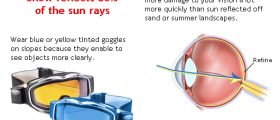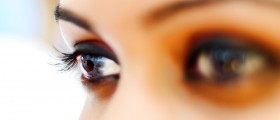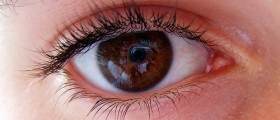
In order for us, humans, to see the eye must have a source of light. Once it has bounced from other objects, light enters the eye through the front part of the organ i.e. the cornea and the pupil (the central part of the iris) and enters the front chamber. There it engages in the process of refraction achieved by the lens. Once light rays pass through the lens they are focused on the retina. The retina contains specialized cells called rod and cone cells which help us see under certain circumstances. For instance, rod cells are essential for seeing things in dim light and seeing movement while cone cells are important for detailed vision and color vision.
So, light is actually very important for us to recognize different objects, people etc. However, some people may be sensitive to light and this problem can be associated with different underlying causes.
Glare
Glare occurs when the person's ability to see gets affected by a light source. Glare can be divided into discomfort glare and disability glare.
As far as discomfort glare is concerned, it basically occurs when a light source is way too strong to be looked at. The person acts with a reflex and closes his/her eyes. People usually face discomfort glare once they leave a dark room and move into bright sunlight.
Disability glare, on the other hand, is the one interfering in one's visual performance. This type of glare is most commonly associated with some eye diseases such as cataract.
What are Causes of Glare?
Glare can be caused by some congenital illnesses. Albinism is one of these. In people suffering from albinism the eyes (as well as the rest of the body) do not posses the specific pigment called melanin.
Furthermore, apart from cataract (which has already been mentioned) glare can be associated with acquired conditions like macular degeneration and is frequent in people suffering from meningitis. In them the problem with seeing in bright light is defined as photophobia.Treatment for Increased Eye Sensitivity
There is no unique treatment for eye sensitivity. Namely, the underlying cause determines the approach and specific treatment options doctor will eventually opt for.
Any case of light sensitivity must be reported. People who deal with eye sensitivity associated with some chronic eye conditions can benefit from wearing a hat with a wide brim. Tinted glasses are another solution. Sunglasses are supposed to have an UV filter and protect the eyes from detrimental UVA and UVB light. If you do not know what eyeglasses to choose, turn to your ophthalmologist.

















Your thoughts on this
Loading...